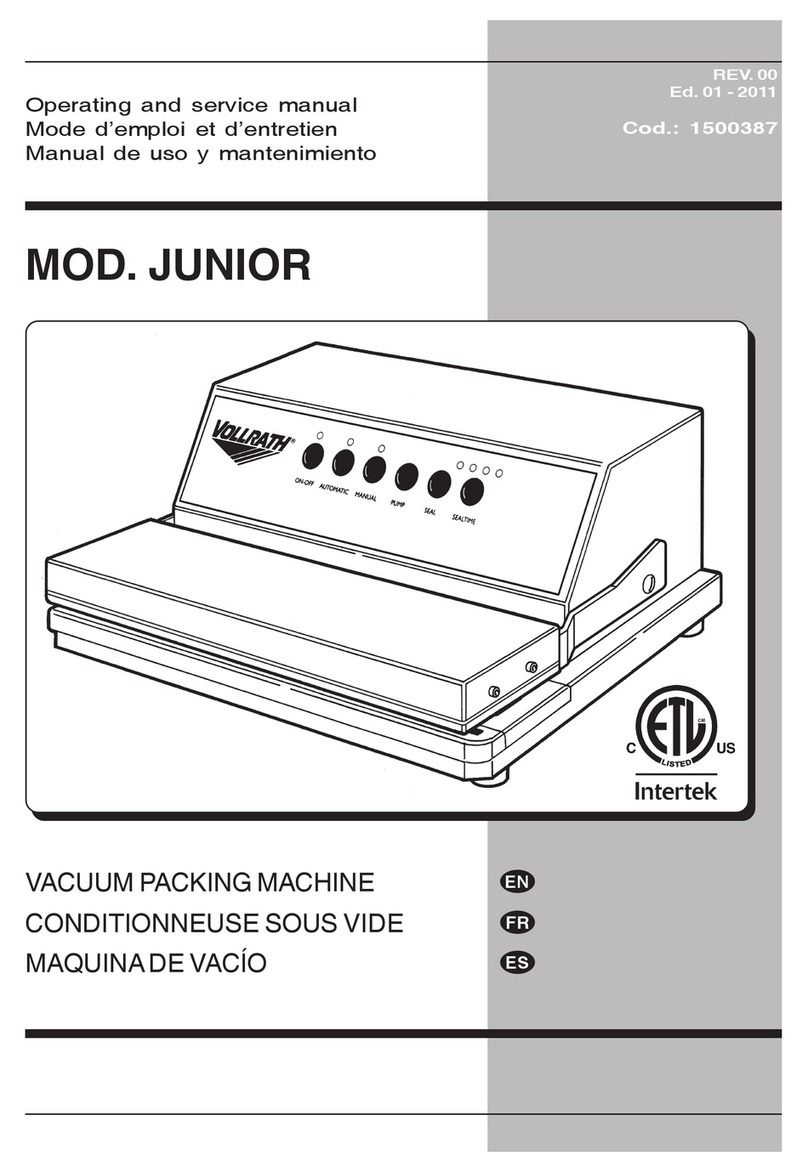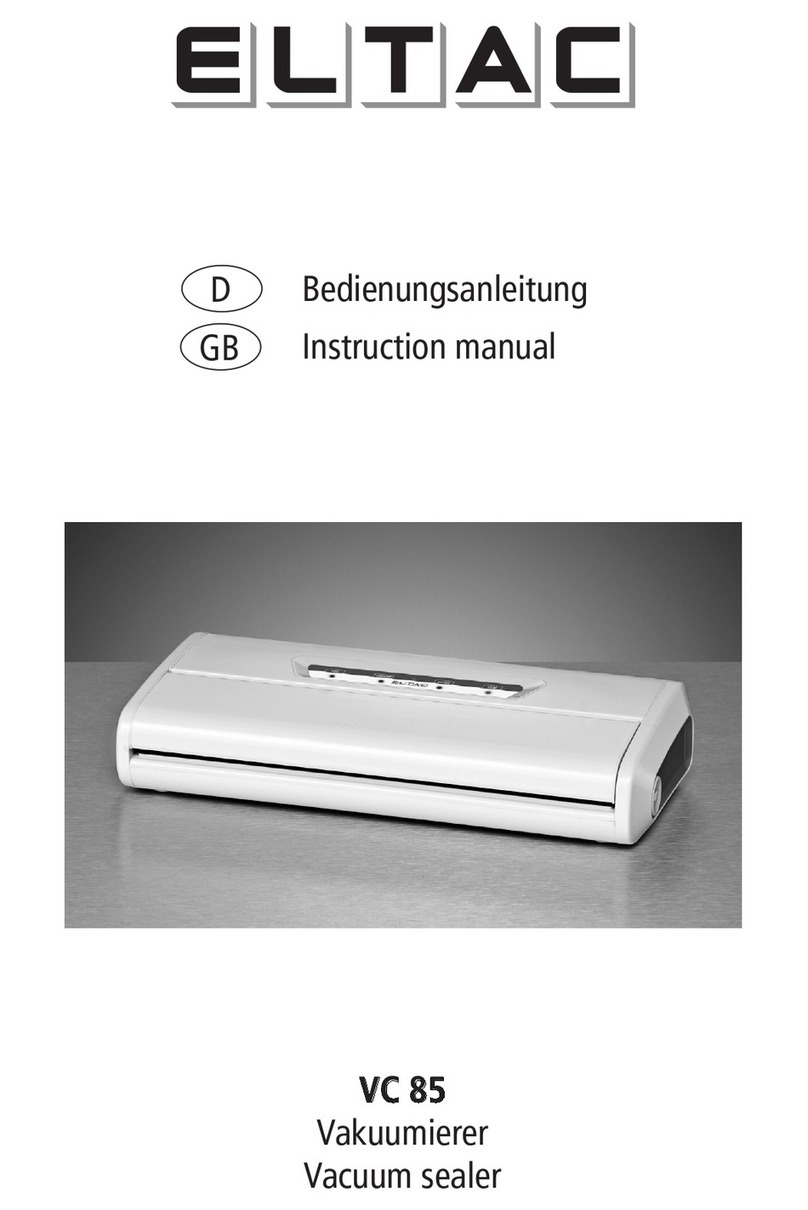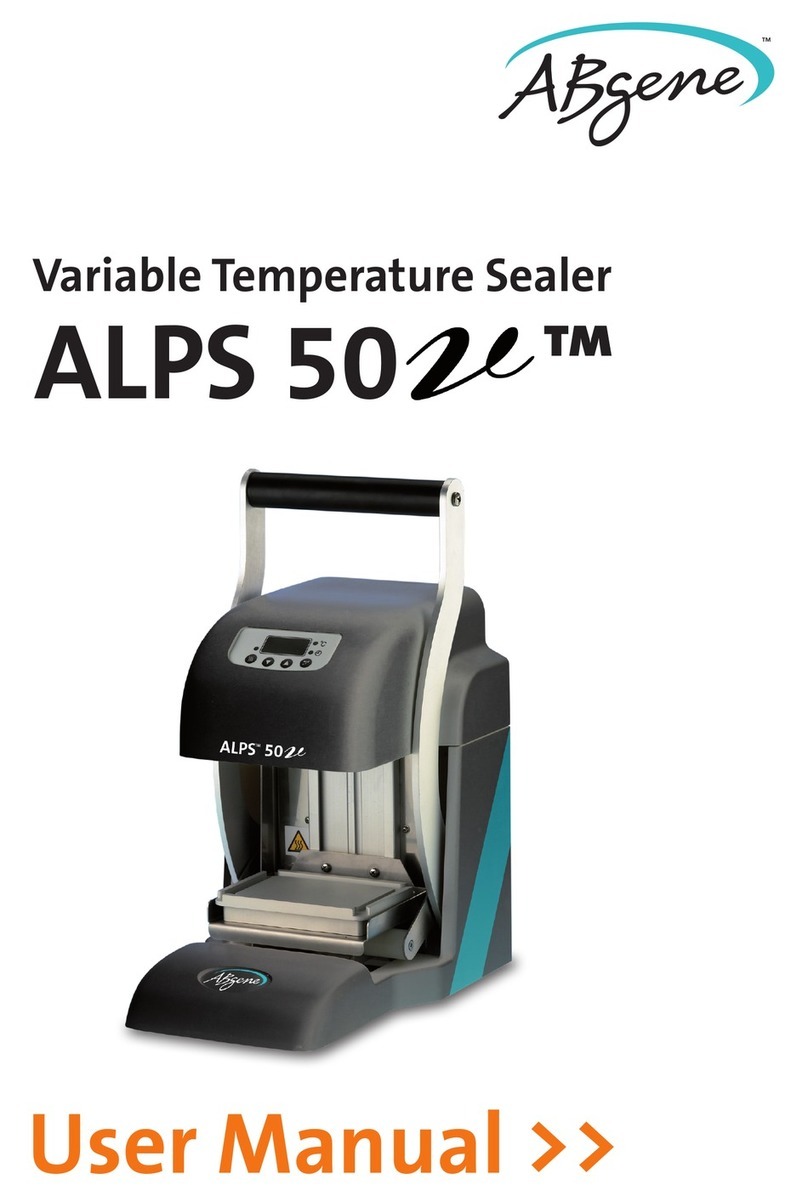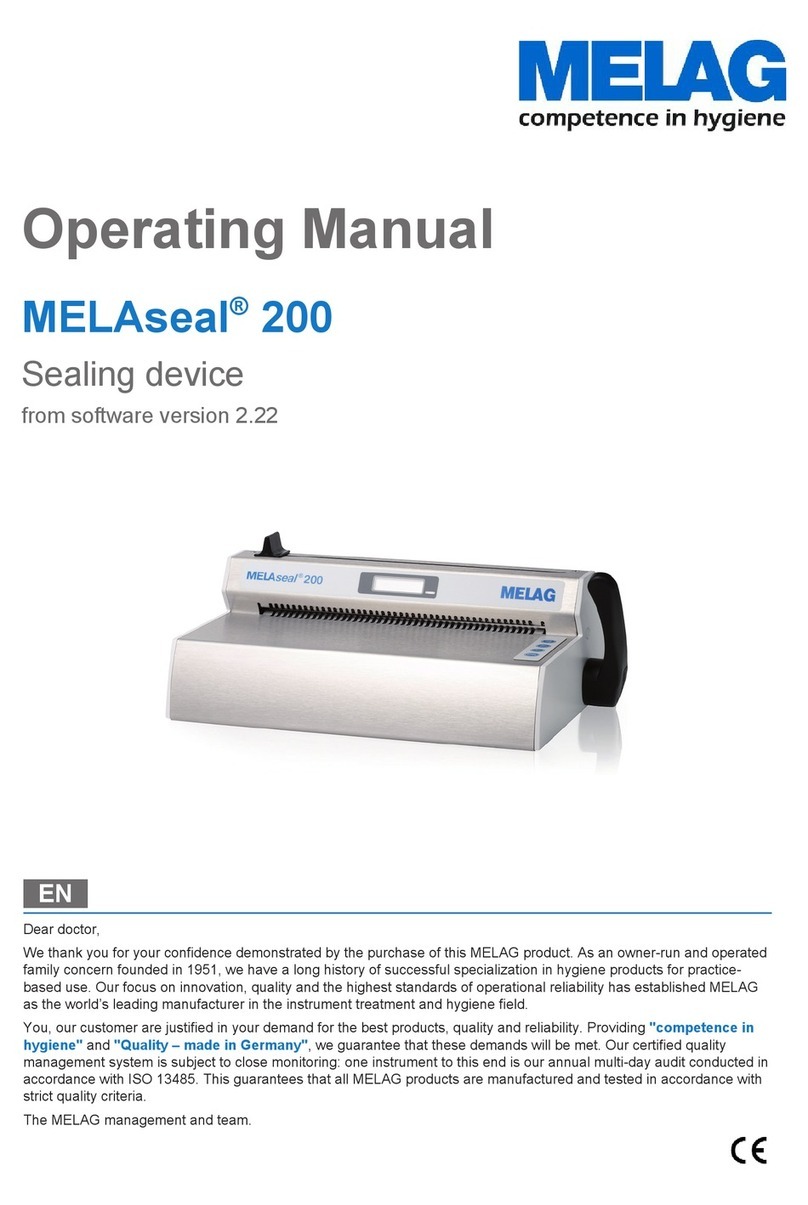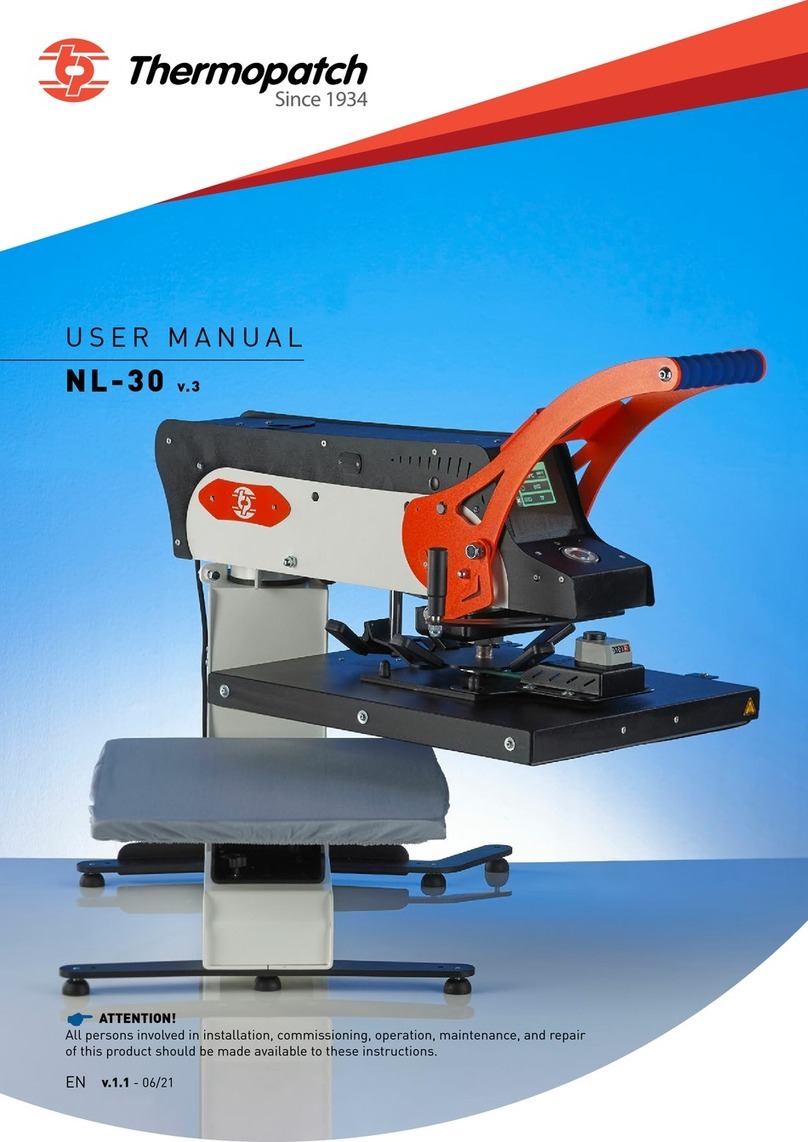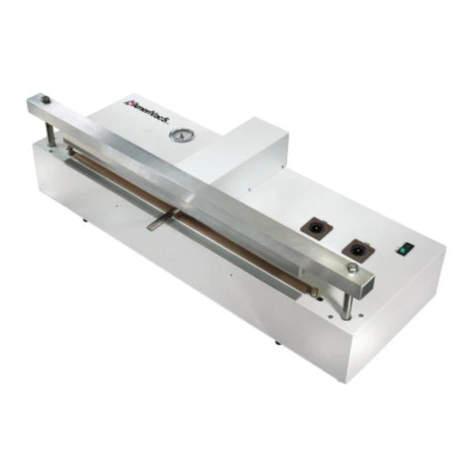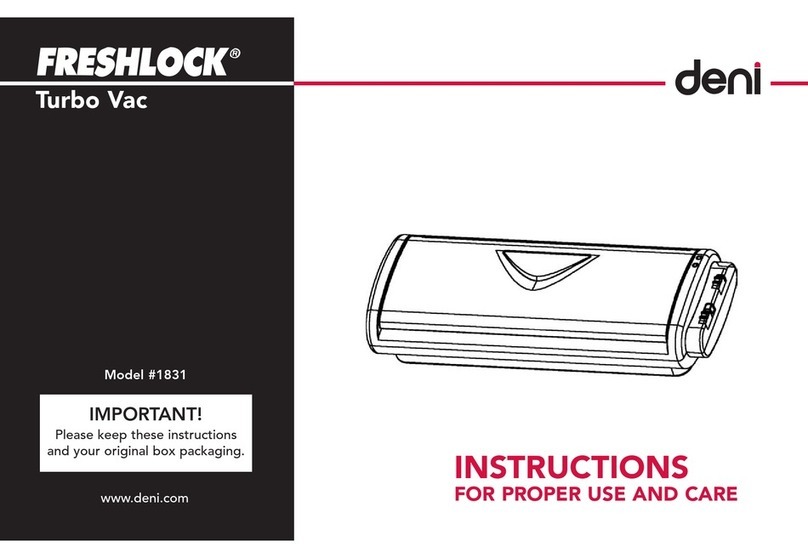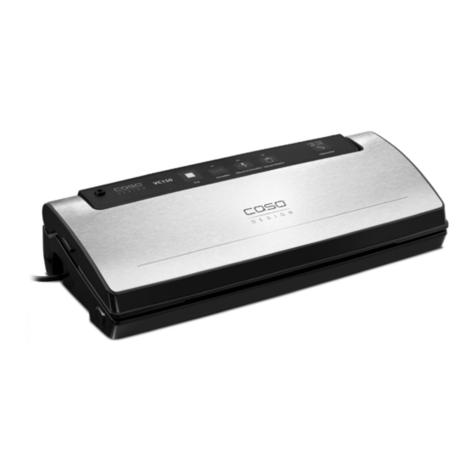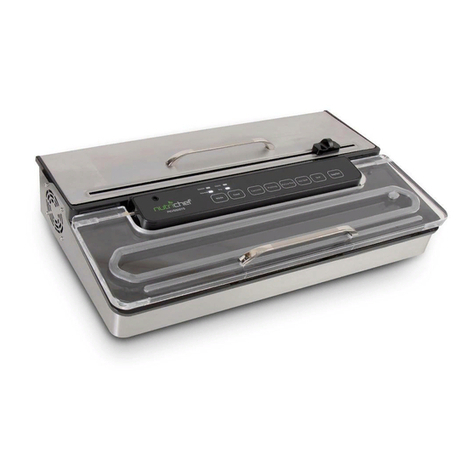Global Industrial 244221 User manual

user
manual
page 1
general
information
Thank you for purchasing our hand impulse sealers.
This owner’s manual contains information relating to
your sealer. The manual will provide you with basic
information concerning both operation and maintenance
of your new machine. Please read it carefully as
failure to do so may result in bodily injury and/or
damage to the equipment.
No part of this manual may be duplicated, reproduced,
stored in a retrieval system, translated, transcribed,
or transmitted in any form without our express prior
written permission.

page 3
page 2
Safety
Instructions
Below are general safety precautions and warnings That should
be understood prior to setting up or operating your equipment.
Read and fully understand all instructions and warnings prior to
using this unit. Your safety is most important! Failure to comply
with procedures may result in serious injury or property damage.
Remember: Your personal safety is your responsibility.
Warning!
· Never operate or service your sealer until you have read
this manual completely and understand it fully.
· Only plug the sealer into a standard 110 Volt, 60Hz wall
outlet or surge protector.
· Do not use the sealer if the power cord, plug or any other
parts are damaged. Do not allow the power cord to drape
into your work area. Check that all parts are operating
properly and perform the intended functions. Replace any
worn parts before starting operation. Check for all other
conditions that may affect the operation of your sealer.
· Always disconnect sealer from power source before
servicing, changing accessories or cleaning the unit.
· To provide protection against the risk of electrical shock,
the power connection must be properly grounded at all
times.
· Do not leave the sealer unattended when in use. Disconnect
the sealer from the power source before leaving the work
area.
· Do not use the machine for any other purpose other than to
seal thermoplastic materials. Doing so may result in
damage to the machine and injury to the operator.
· Never touch the heating elements with hand while the
sealer is plugged into a power source, in operation or just
finished operation. Touching heated areas may cause fire
and/or severe burns.
· The sealer is not water resistant or water proof. Spraying
down the machine will damage machine or cause electrical
shock. Do not submerge the sealer into water or liquid.
· Do not operate sealer in a corrosive or humid environment.
· Always keep the machine clean and in good working
condition. Follow any maintenance procedures outlined in
this manual. Make sure unit is disconnected from power
source before cleaning.
· NEVER use any accessories or parts from other
manufacturers. Machine should not be altered or modified
using parts that are not genuine authorized parts. Doing so
will VOID YOUR WARRANTY

· When replacing the heating elements, always replace the
PTFE adhesive under the heating element. A worn PTFE
adhesive can cause the heating element to break. The
PTFE adhesive works as a barrier between the body of the
sealer and the element. Never allow the element to come
in direct contact with the sealer body as that will damage
the timer.
page 5
page 4
SAVE THESE INSTRUCTIONS
REFER TO THEM OFTEN AND USE THEM TO INSTRUCT OTHERS.
introduction
Our hand impulse sealers are designed for sealing polybags and
other thermoplastic materials. The sealer can seal polyethylene,
polypropylene, saran, nylon, static shielding bags, and Mylar up to
10mil in total thickness.
Features
Your sealer is equipped with a wide range of standard features
and capabilities.
· Impulse sealing - no warm up time needed
· Electronic timer for variable control
· Heavy duty, all metal construction
· Table top design supported with anti-slip rubber feet
· Seal width: 2mm or 2.6mm wide flat heating element
· Option: Round heating element available for seal and cut
applications
· Manufacturer spare parts kit includes: 2 heating elements,
2 PTFE covers
How Do Hand Sealers Work?
Our impulse sealers fire a short burst of electricity through
a specially designed heating wire to weld thermoplastic
materials together. The length of the seal time will depend on
the sealing characteristics of the bag being sealed. The sealing
process is simple: The operator places material on the platform
of the sealer and brings the sealing arm down to seal.

page 6
page 7
Specifications
8" 12" 16" 20"
Model No. 244221 244222 244223 244224
Power 110V/60Hz 110V/60Hz 110V/60Hz 110V/60Hz
Watts 160W 380W 600W 730W
Seal Width 2mm 2mm 2.6mm 2.6mm
Sealing Length 7.9" 11.8" 15.7" 19.7"
Dimensions 3" X 15" x 6" 3" x 18" x 7" 3" x 22" x 7" 5" x 28" x 8"
Shipping Dimensions 14" x 8" 7" 20" x 10" x 7" 24" x 11" x 7" 32" x 10" x 7"
Weight 7-lbs 10-lbs 12-lbs 15-lbs
Electrical Circuit Diagram
heating element
transformer
microswitch
ac source
timer set
Operating
your Sealer
Assembly Instructions
Sealer comes assembled and ready to operate. No warm up
time is required.
Operation
· Before operating, check the heating element, PTFE
cover, PTFE adhesive and the silicone rubber. The heating
element should be intact.
· Insert the power cord into the correct receptacle (110V).
· Set the timer knob to the lowest setting. Always start with a
low setting and increase gradually as needed.
· Place material to be sealed on the platform of the sealer and
bring the sealing arm down firmly, but gently. The red light will
turn off when sealing time is completed.
· When red light turns off, keep pressing the sealing arm down
for an additional 2-3 seconds. For a high-quality seal, seals
must cool under pressure. Thicker materials will require a
longer cooling (congealing) time.
Tips for Successful Sealing
· If the seal is broken or damaged, decrease the sealing time.

· If the seal is not fully welded, increase the sealing time.
· If the sealing material sticks to the sealing pad, decrease the
congealing time.
· If the width of the seal is not perfect or does not match the
size of the element, increase the congealing time. When
sealing/timer light turns off, keep pressing the sealing arm
down for an additional 2-3 seconds. For a high quality seal,
seals must cool under pressure. We usually recommend a
congeal setting of at least 2x that of the heat setting but every
bag will have variations. Thicker materials will require a
longer cool (congealing) time.
· Always keep the sealer clean. Remove any residue found on
the platform and PTFE cover. Silicone spray may be used for
this purpose.
· When replacing the heating elements, always replace the
PTFE adhesive under the heating element. A worn PTFE
adhesive can cause the heating element to break prematurely.
The PTFE adhesive works as a barrier between the body of
the sealer and the element. Never allow the element to come
in direct contact with the sealer body as that will damage the
timer.
· Occasionally check the condition of the silicone sponge/com
pression foam for wear or burns. A damaged silicone rubber
will affect the quality of the seal.
· Be sure to unplug the unit before replacing any parts.
page 8
page 9
The following maintenance procedures should be followed to
ensure the longevity of your hand sealer.
Inspection and Cleaning
Inspect your machine daily.
· Use a clean cloth to remove any plastic residue remaining on
the top PTFE cloth.
· When replacing the elements, always check the condition of
the bottom PTFE adhesive.
· Check the condition of the silicone rubber for wear and burns.
· A damaged silicone rubber will affect the quality of the seal.
Replacement Kit Instructions
Our hand sealers will require new heating elements and PTFE
from time to time. Heating elements will break through wear
and tear. A good rule of thumb is to replace the bottom PTFE
adhesive every time you change your heating element. The top
PTFE cover prevents the plastic or other thermoplastic
material you are sealing from sticking to the heating element.
maintenance
This manual suits for next models
3
Table of contents
